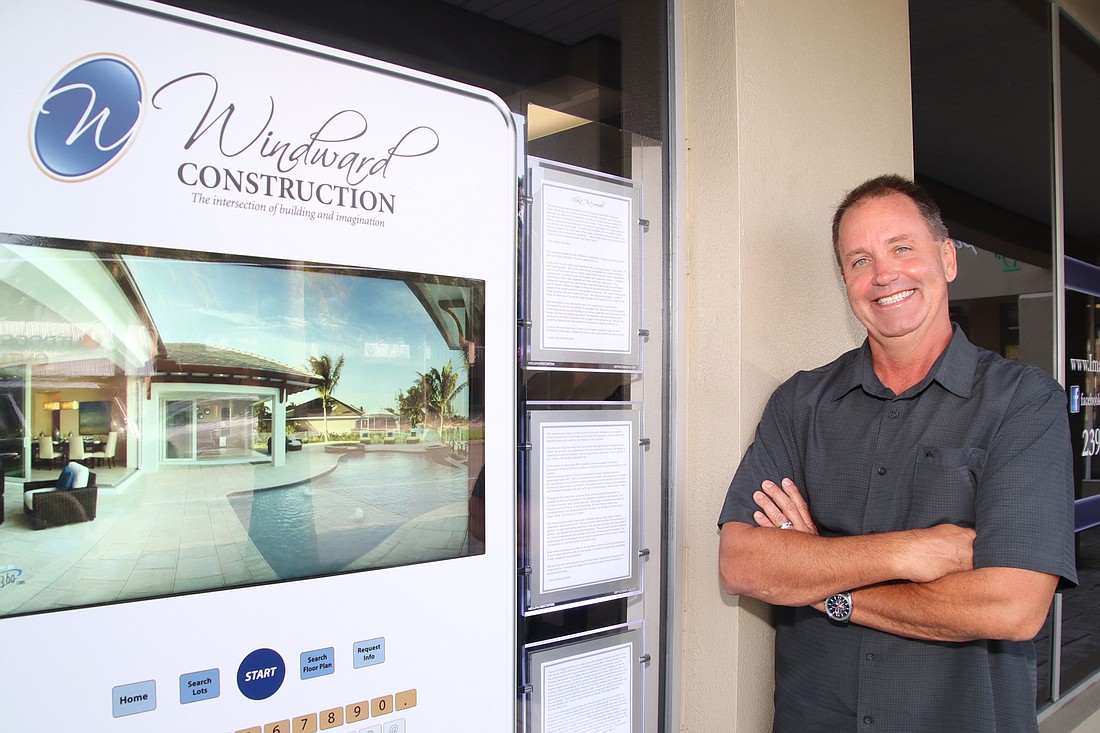- December 13, 2025
-
-
Loading

Loading

During the peak of the home construction boom of the early 2000s, Brian Haag and his company, Gulfstream Development Group of Cape Coral, was building as many as 1,000 homes a year in Southwest Florida. A 55-year-old, second-generation homebuilder, he had transitioned the company from one that built some of the first mega-mansions in the Fort Myers area into one that addressed the needs of a rapidly growing market.
One recession, one major hurricane and one flirtation with marina ownership later, the Cape Coral native again reinvented himself in 2012 as Windward Construction, a Cape Coral-based boutique, custom and semi-custom homebuilder.
Along the way, he learned bigger is not necessarily better, particularly for a hands-on contractor who builds on a simple lesson he learned from his father, Doug: It’s either right, or it’s wrong.
There’s no gray area in between.
What is in between, though, is style, and Haag says his father’s style was ahead of its time and one that endures today.
“My dad was a real creative guy,” Haag says. “Years before it was popular to open up houses, and they were very compartmentalized, he would go in and gut walls and open up the backs of the houses to the outdoors.”
“I designed my own house and put only one dining room in the back. All I heard was I would never sell the house. I didn’t care because I knew I was never going to use that 200 square feet in the front." Windward Construction founder and owner Brian Haag
Haag struck out on his own in 1996 with Gulfstream and rode the home construction wave until the crash that began in 2007. He closed the company and set his sights on building FEMA houses in Mississippi in the aftermath of Hurricane Katrina. Along with building more than 300 homes there, he restored historic properties in Gulfport, Miss. An interest in boating then brought the opportunity to partner in the purchase of Sara Bay Hotel and Marina in Sarasota, which included renovation of the hotel.
“I thought owning a marina was about boating,” he says. “It isn’t.”
Turning his attention back to homebuilding, Haag founded Windward in 2012 and applied the knowledge gained from building 15,000-square-foot mansions and 1,000 homes a year to create a model that offers five on-your-lot, customizable base plans as well as full custom home construction, building 20 to 25 homes per year with an office and sales staff of five and three project managers. The typical Windward home is 2,800 to 3,500 indoor square feet and up to 5,000 square feet of total living space in the $1 million to $1.5 million range, though the company is building a $10 million home on Captiva.
Every one of them, Haag says, reflects his father’s vision of what home living should be.
“We have a couple of tag lines,” he says. “One is ‘The intersection of building and imagination,’ and the other is ‘Blurring the lines between outdoor and indoor living.’” Combined, that means floor plans that buck standards plus disappearing glass and design elements that seamlessly integrate indoor and outdoor living spaces.
The first room to go at the drawing table was the formal dining room typically located near the front. That was followed, in some homes, by any dining area at all.
“I designed my own house and put only one dining room in the back,” Haag says. “All I heard was I would never sell the house. I didn’t care because I knew I was never going to use that 200 square feet in the front. Now, every floor plan I have has one dining area in the back.”
If that. Some have no dining room at all. In its place is an oversized kitchen island with dining surface attached.
“You can cook; you can serve; you can eat; you can entertain,” Haag says. "It’s all right there because people are gathering at your island whether you want them to or not."
More than innovative design, Haag says his clients expect to regularly find him on the job site, and those who live out of state part of the year expect readily available updates. He uses Buildertrend software, which allows customers to track every aspect of their project including costs and stage of completion with photos, videos and regular updates from the project manager.
Although he declined to disclose revenues, Haag says growth has been a steady 15% to date. Comfortable in his niche, he says the company is about where he wants it to be.
“I feel like my ability to manage what I do now is pretty good. I don't want to get to the point where I feel like we're jamming stuff in our pipeline just because we can,” he says. “I like where we are as a company. I like the product we build. I like the people we have. If I distill it down to profitability, doing 20 more houses will take four or five more people, and what did I just do? I only gave myself a bigger ego.”